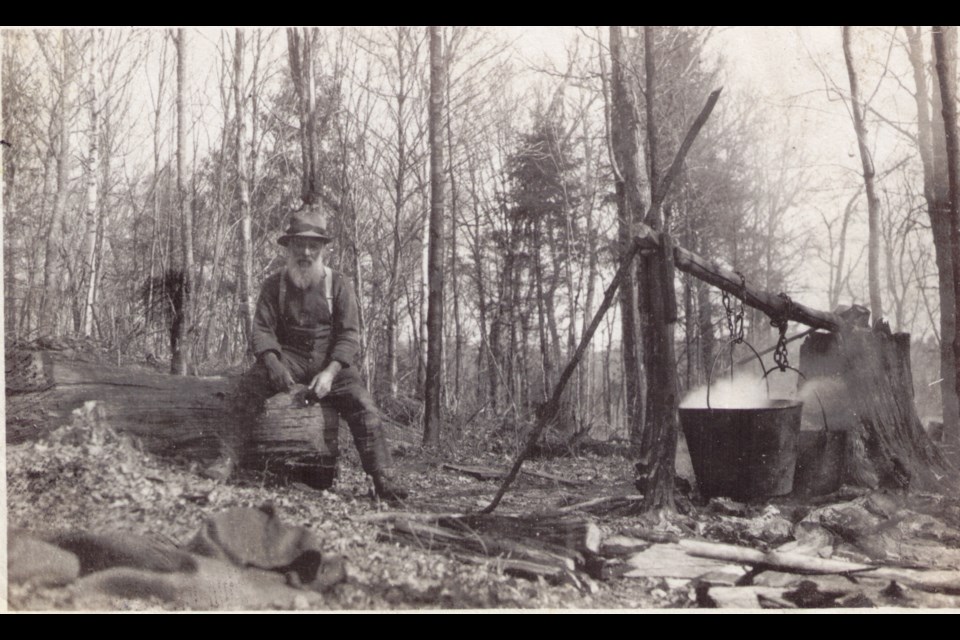It’s maple season. Today, visiting a sugar bush is a fun distraction after a long winter. In rural Ontario in the 19th and early 20th centuries, however, it was a month of hectic activity because maple sap represented a valuable resource for landowners.
Of course, collecting maple sap for sugar was not the invention of European settlers. First Nations peoples have been making maple syrup since time immemorial. They refer to the period when the sap begins to flow as the sugar moon, and their method of making maple sugar was ingenious.
Knives were used to gash a maple tree in a slanted direction, cutting through the bark into the soft wood beneath. A wooden chip was inserted into this wound. Leaking sap would be channelled along this chip, eventually dripping into a birch pail, or perhaps a hollowed-out log resting on the ground below. The sap was then boiled down in earthenware pots or by adding red-hot stones in a trough.
First Nations peoples shared the process with European settlers, who, with access to metallurgy, refined the time-honoured process. The settlers’ way of making maple sugar was more sophisticated and on a far larger scale than that practised by First Nations peoples, but nonetheless largely similar.
Gashes were made into trees, and a round spout (originally wooden, but later metal) was inserted an inch into the trunk. At first, metal pails were placed below to collect the dripping sap, but then someone had the idea of adding hooks to the spout so pails could be hung directly beneath. The collected sap was then boiled down; 40 gallons of sap makes one gallon of syrup.
Maple syrup represented a valuable resource on early farms. At the time, refined sugar was still an expensive commodity. The forest, however, could supply a family with a year’s worth of sweetener at no cost. Additionally, syrup could be sold to supplement income from growing crops and raising livestock. As a result, many farmers set aside large acreage solely for use as a maple bush.
Making maple syrup may have cost nothing, but it required a lot of labour and long days. There weren’t any pipelines in those days, so pails had to be gathered by hand, sometimes twice a day. Trudging through acres of woods, through snow and mud, one would end days cold, tired and wet.
Maple season typically ran from the third week of March to mid-April — three hectic but exciting weeks.
As sugar became cheaper and more readily available in the 20th century, farmers began to give up on the harvest. It was one more chore on a long to-do list. By mid-century, most were gone.
A sweet springtime tradition had, with a few exceptions, come to an end.



